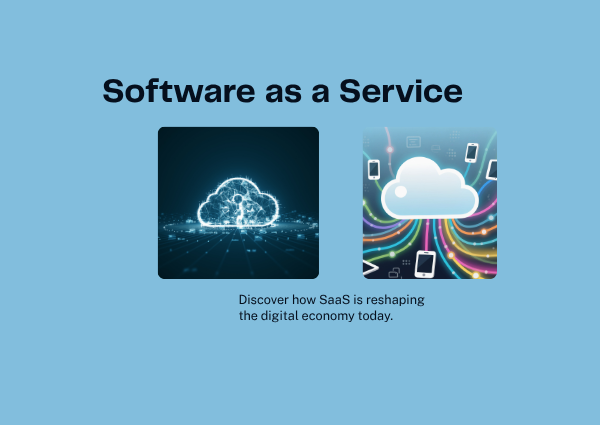1. What Is Software as a Service (SaaS)?
SaaS is a cloud-based software delivery model where users access applications through the internet instead of installing them locally.
Examples include:
- Google Workspace for productivity
- Slack for communication
- Canva for design
- Shopify for e-commerce
With SaaS, businesses pay a subscription fee — usually monthly or yearly — to access continuously updated, secure, and scalable tools.
2. Why SaaS Is Transforming Business
SaaS has changed how companies operate by offering:
- Cost efficiency: No upfront software purchase or maintenance costs.
- Scalability: Add or remove users anytime.
- Accessibility: Work from anywhere, on any device.
- Automatic updates: Always have the latest version without downtime.
For marketers, SaaS tools like Meta Business Suite, Google Ads, and HubSpot CRM make it easy to manage campaigns, track ROI, and scale faster.
3. SaaS in Digital Marketing
SaaS and digital marketing go hand-in-hand. Whether it’s email automation, ad analytics, or AI-powered content creation, SaaS solutions give businesses a competitive edge.
For example:
- Mailchimp simplifies email campaigns.
- Hootsuite automates social media posting.
- Semrush and Ahrefs track SEO performance.
💡 Tip: If you’re running Meta Ads or Google Ads, using SaaS analytics platforms can help visualize data, improve targeting, and boost ROI.
4. The SaaS Business Model
The SaaS business model focuses on recurring revenue and long-term customer relationships.
Here’s how it works:
- Offer a free trial or freemium plan.
- Convert users to paid subscriptions.
- Retain customers with continuous updates and support.
The magic lies in Customer Lifetime Value (CLV) — the longer customers stay, the more profitable the product becomes.
5. The Future of SaaS
Emerging trends shaping SaaS in 2025 and beyond:
- AI Integration: Predictive analytics and automation.
- Vertical SaaS: Industry-specific platforms (e.g., healthcare SaaS).
- Usage-based pricing: Pay only for what you use.
- Security & Compliance: Enhanced data privacy and encryption.
These innovations ensure SaaS remains at the heart of digital transformation for businesses worldwide.
Conclusion: SaaS Is Here to Stay
SaaS isn’t just software — it’s a strategic advantage. It empowers businesses to innovate faster, collaborate seamlessly, and scale globally without the burden of infrastructure costs.
Whether you’re a startup founder, marketer, or developer, understanding SaaS means understanding the future of business itself.
